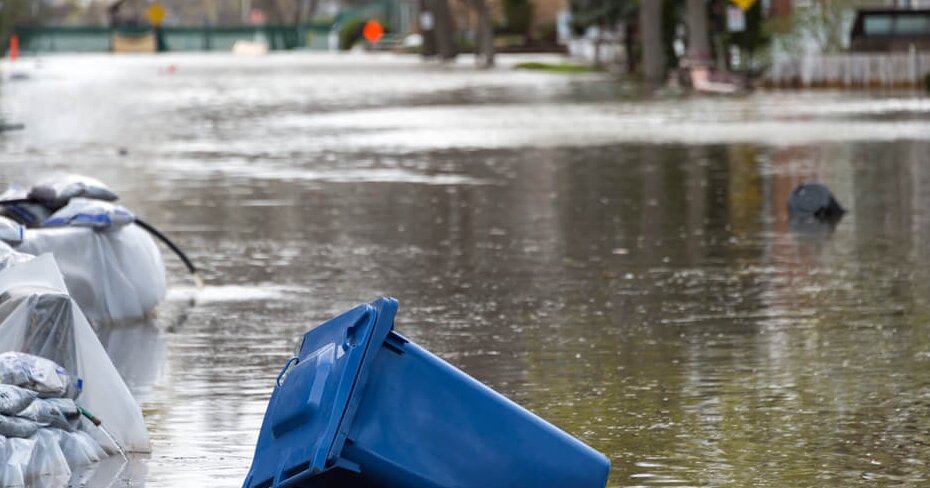Can your home become uninsurable due to climate risk?
By: Jessica Mach on May 9, 2024
Extreme climate events are growing in both severity and frequency across Canada. In 2023, wildfires on the West Coast, in the North, and in the Atlantic provinces pushed the country into its most destructive wildfire season on record.
Rising sea levels are continuing to expand flood risk zones, making a growing number of homes more prone to flooding.
As more and more homeowners find themselves living in areas vulnerable to climate damage, finding a sufficient home insurance policy has become increasingly important — if not always straightforward. Here, we explain the options available to homeowners seeking climate-related coverage.
At a glance:
- Which parts of Canada are under the most climate risk?
- What types of climate-related damage are typically covered under a home insurance policy?
- What types of climate-related damage are not covered by home insurance?
- What are your options if you can’t get the coverage you need?
- Renewing your mortgage when you can't qualify for flood insurance
Which parts of Canada are under the most climate risk?
Unfortunately, climate risks are not contained to specific areas of the country, according to Rob De Pruis, a national director with the Insurance Bureau of Canada (IBC), which has been tracking severe weather trends across the country since 1983.
He points to the major climate events that occurred in 2023 alone: Wildfires in the Northwest Territories, British Columbia, and Alberta; hailstorms in Alberta and across the prairies; severe ice storms and tornadoes in Ontario; a cold snap, flooding, and wildfires in Atlantic Canada.
“It’s literally coast to coast to coast,” says De Pruis. “When we think about specifically the wildfire and the flood risk, no province or territory is spared.”
Those risks likely won’t recede in 2024, particularly when it comes to wildfires. In April, multiple federal ministers raised concerns that wildfire activity is already higher than usual. Moreover, they expect unusually warm spring temperatures to boost wildfire activity in parts of northern Ontario, western Quebec, and the Prairies.
The key is understanding the specific climate risks in your particular area, says De Pruis said. For example, he adds, B.C. is more prone to earthquakes, whereas parts of Manitoba might be more vulnerable to flooding.
Related: How to find a good home insurance policy if you live in a wildfire zone
What types of climate-related damage are typically covered under a home insurance policy?
Every home insurance policy will outline a list of perils — i.e., events resulting in damage or loss — that it provides coverage for. A standard home insurance policy typically covers a range of climate-related perils, like fire, wind, and hail, De Pruis explains.
Notably, if an insurance policy covers damages or loss resulting from a fire, it doesn’t matter whether the fire in question is a wildfire or something that resulted from a kitchen mishap: Fire is fire, De Pruis says, and you will have coverage regardless of the source.
Many insurers also offer optional coverage for other perils that aren’t baked into a standard policy, like overland flooding, sewer backups, and earthquakes.
What types of climate-related damage are not covered by home insurance?
According to De Pruis, there are several climate-related perils that are unequivocally not covered by any home insurance provider in Canada: Landslides and tsunamis. Currently, a single insurer, the Co-operators, offers storm surge coverage.
Other types of perils are simply trickier to get coverage for.
This is notably the case for flooding. Although many insurance companies offer this type of coverage as an optional add-on, a homeowner can become ineligible for flood insurance if their home is located in a high-risk flood zone.
About 10% of Canadian households are highly vulnerable to flooding but cannot access flood insurance, according to the IBC.
Many insurers also do not provide sewer backup coverage as a standalone add-on, requiring homeowners to buy it bundled with their overland flooding coverage instead, De Pruis says.
This means homeowners who do not qualify for overland flooding coverage also won’t have access to sewer backup coverage by default — at least with insurance companies that bundle the two add-ons.
Read more: One third of homeowners worried about extreme weather damage
What are your options if you can’t get the coverage you need?
In an effort to address the gap in flood insurance access, the IBC has advocated for the establishment of a National Flood Insurance Program — a public-private partnership between the federal government and the insurance industry that aims to give all homeowners, regardless of their individual flood risk, access to affordable flood insurance.
The program aims to provide reliable coverage to homeowners while also easing the pressure on taxpayer-funded, disaster financial aid programs — one of the only existing avenues for uninsured homeowners to get relief when their homes see flood damage.
De Pruis warns, however, that access to provincial disaster aid is not guaranteed, so homeowners should familiarize themselves with the criteria they need to meet.
In the meantime, homeowners in high-risk flood zones can take other steps to minimize flood damage, De Pruis says, like keeping valuables out of the basement.
If you need sewer backup coverage but do not qualify for overland flooding coverage De Pruis advises installing a backflow preventer, a device that only allows water to flow only in one direction. You may also find insurance companies that do not bundle the two add-ons together so you can at least still get a minimum amount of coverage.
Homeowners who are covered for fire and storm-related perils can further prevent damage by installing fire-resistant or impact-resistance materials on the outside of their home.
Renewing your mortgage when you can't qualify for flood insurance
While homeowners typically need home insurance to qualify for a mortgage, De Pruis says that more often than not, this simply means a standard policy that does not include an overland flooding add-on.
“If insurance is a requirement,” says De Pruis, “there's no insurance impediment in order to get that coverage.”
Desjardins Group recently made headlines when it decided to stop offering new mortgages to homes in Quebec that have a five percent chance or more of flooding each year. But De Pruis notes that Desjardins is unique in this practice.
“There are many, many other lenders for mortgages that don't have those specific requirements,” he adds.
Read more: What’s the difference between A lenders, B lenders and private mortgage lenders?
As the threat of extreme weather grows, with few reliable means of making sure you’re completely covered, it’s never been more important to contact an insurance broker to cover the basis. Perhaps you’ll realize there are more options than you thought.
Save 32% on average on home insurance
Compare 50+ quotes from Canadian providers in 3 minutes.


